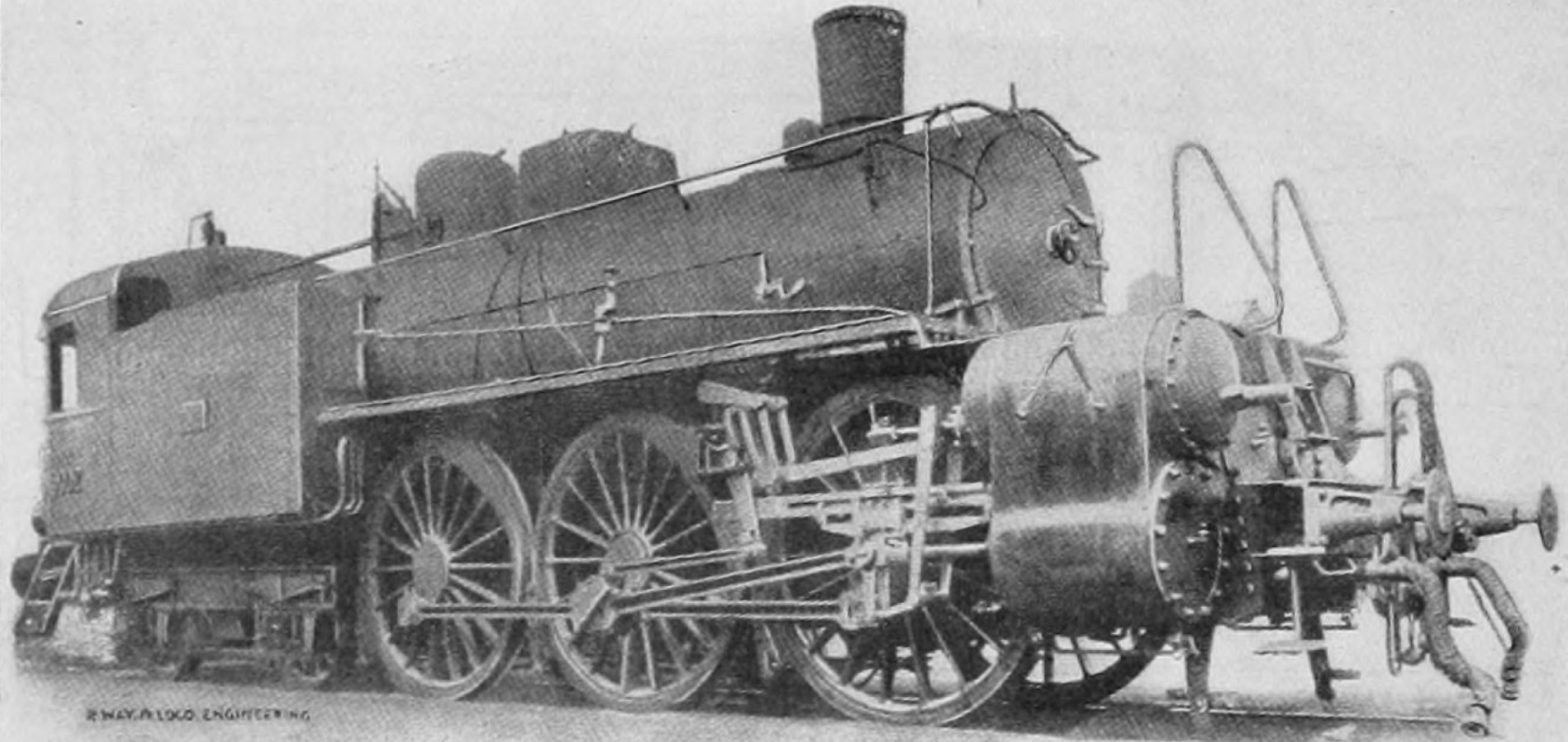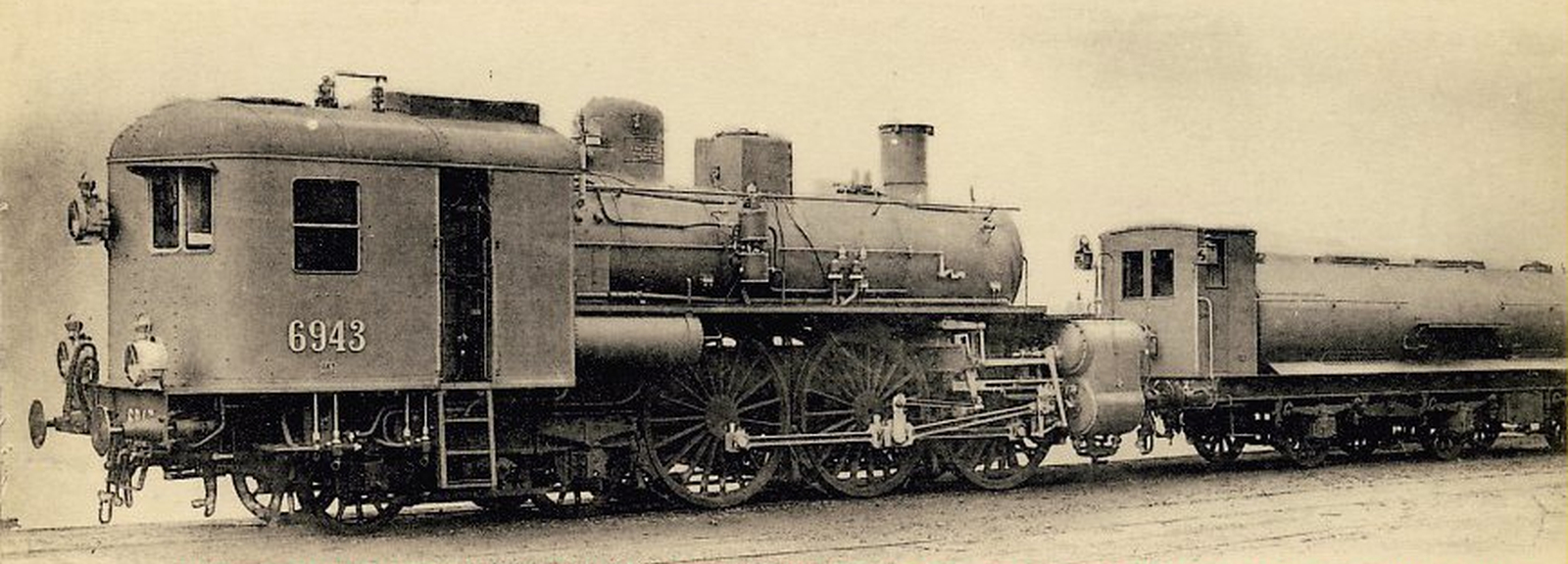At the turn of the century, Enrico Plancher, chief engineer of the Rete Adriatica, was looking for a solution to accommodate large fireboxes while eliminating the obstruction of visibility from the smoke. His approach was to place a ten-wheeler in reverse and use it to pull the firebox forward. As a result, it had enough space above the bogie and could accommodate a large grate. Since the driver's cab was now also in the front, the view was no longer restricted by the smoke, which was a great advantage, especially when driving through tunnels.

Oblique rear view
Railway and Locomotive Engineering, August 1904
While the problem of firing in later cab-forward locomotives was solved with oil or coal dust, the coal in the Rete Adriatica locomotives had to be carried in the driver's cab, which made them semi-tank locomotives. Instead of a tender with water and coal, only a simple, three-axle tank car was carried. The compound engine was designed according to Plancher's own plans, with the two high-pressure cylinders on the right and the low-pressure cylinders on the left, and a total of only two Heusinger controls.

No. 6943 on an old postcard
Fernand Fleury 
Initially, only two prototypes were made, the first of which was shown at the World Exhibition in Paris and was then loaned to the French Ouest for a month and a half on a trial basis. A total of 43 examples were built by 1906, some of which were built by Borsig in Germany. The last ones were already assigned to the FS at the factory and classified in Baureihe 670.
Although the positioning of the driver's cab was advantageous in theory, it revealed serious disadvantages in operation. Since the boiler was located behind the crew in the direction of travel, the boiler and the track could not be observed at the same time. Nevertheless, from 1919 the locomotives were equipped with new boilers with superheaters, which increased the output by 15 percent. These locomotives were listed as Baureihe 671 and were used until the early 1930s. As late as 1936, a locomotive was saved from being scrapped by being used as a test vehicle for the Franco Crosti feed water heater and designated Baureihe 672.